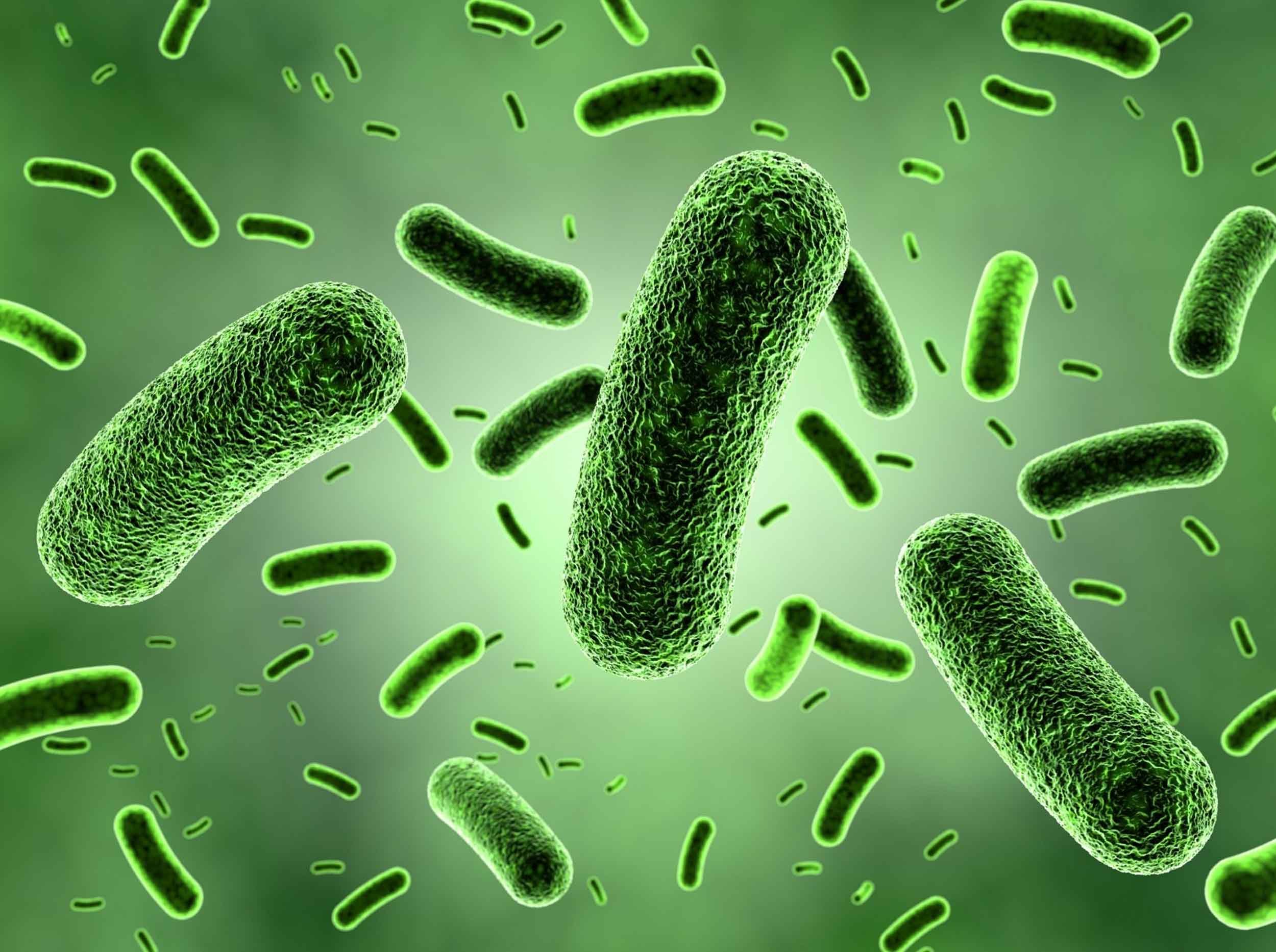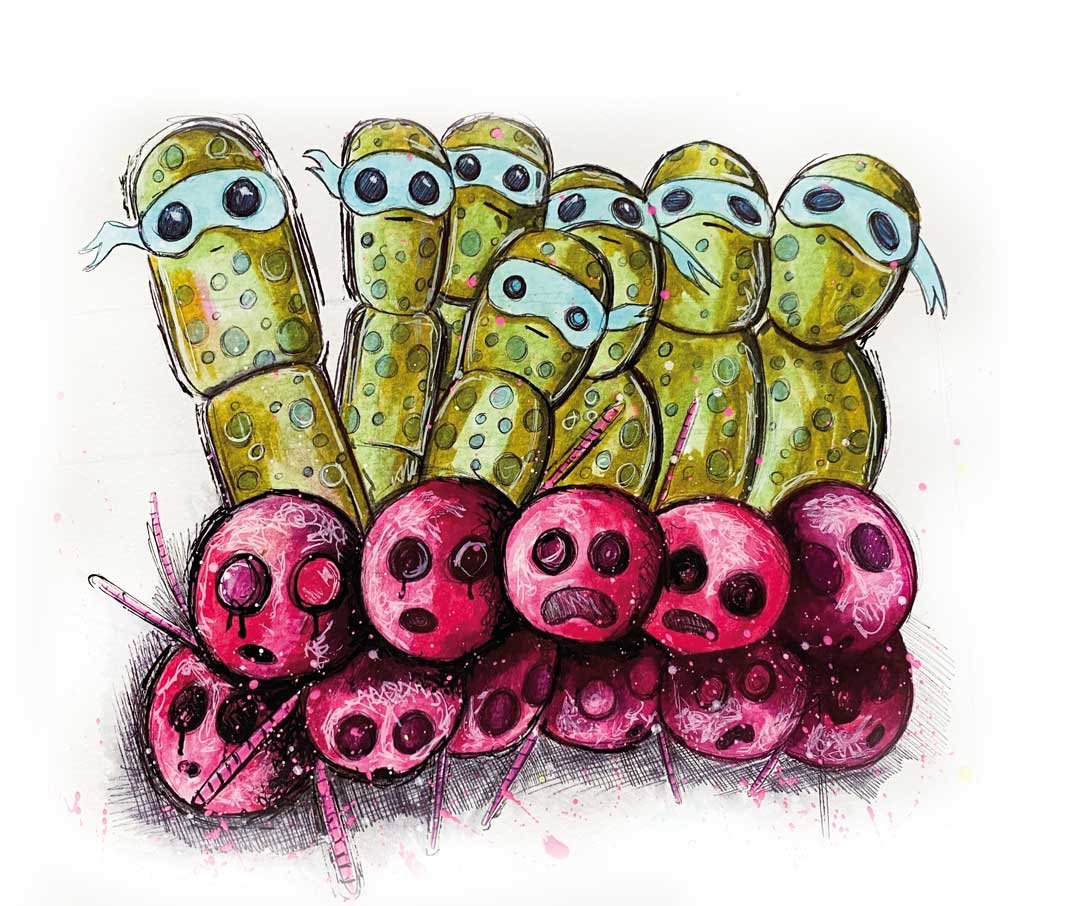
Effective Microorganisms
Effective Micoorganisms (EM®)
As the appropriately titled books by Dr. Higa suggests, Effective Microorganisms (EM) are a pretty big deal. In a world that’s slowly waking up to the unsustainable way of life adopted by the large majority of modern civilisation Dr. Higa is sits in the proverbial corner saying “I told you so”.
It was in 1982, when Dr. Higa was working towards reducing the amount of chemical and inorganic fertiliser used within agriculture, when he stumbled upon EM; a term he later coined. His aim was “Regenerative Agriculture” long before the term even existed. Dr. Higa was developing ways to grow food sustainably long before Kiss The Ground, long before Netflix and, for those fortunate enough to be under the age of 40, long before you were born.
The discovery, development and use of EM is nothing more than the acknowledgement of Mother Nature and the wonderful world she has created. EM is taken from nature, and we use it to restore nature! Our very need for EM is because of human intervention and the disrespect we have shown Mother Nature over the years. EM is natures way of creating a balanced, healthy and sustainable environment.
The use of EM today is our attempt at restoring the natural balance that has been disturbed by human intervention, namely the use of chemicals, inorganic fertilisers and monocultures.
What does EM Stand For ?
EM® is an acronym for Effective Micro-organisms®. EM® is the registered brand name given to a family of microbial-based products using a technology discovered and developed by Professor Dr. Teruo Higa, a Japanese scientist.
These naturally sourced microbes are collected, multiplied, and developed into various formulations to aid nature and improve the health of our soil, environment, and ultimately all living beings.
EMRO is represented all over the world and is a leading authority on chemical-free alternatives for healthy food and healthy living. See their website



Discover the Power of Effective Microorganisms (EM)
Effective Microorganisms, or EM, are tiny living particles invisible to the naked eye. These microorganisms encompass bacteria, protozoa, single-cell algae, fungi (including yeast), as well as multicellular organisms like round and flatworms.
There are three crucial types of microorganisms within EM:
✅ 10% breakdown (e.g., pathogens)
✅ 10% build-up (e.g., fermentation bacteria)
✅ 80% follow the "winner" – joining either the breakdown or building process based on the prevailing conditions.
These ratios allow for a swift balance shift, with "followers" patiently waiting to align with the prevailing microorganism type.
It's essential to support the "builders," and EM products play a key role in this. By using EM products, you foster a supportive environment for the "builders," enabling "followers" to step into the role of "builders." This dynamic prevents the interference of "disruptors."
Wondering how to incorporate EM products? They are beneficial for:
✅ Balancing soil life
✅ Creating compost
✅ Safeguarding plants with a disease-suppressive effect
✅ Maintaining odour barriers in animal residences
✅ Achieving a natural balance in ponds
✅ Plus much more...
Empower your ecosystem with EM products for a healthier and more sustainable environment!

Make it stand out
Whats inside EM?
Lactic acids
are organic compounds that you've probably heard about because they're in sour dairy and fermented foods. But guess what?
They're not just there for taste – they also do important things in our environment. These acids belong to a group called Organic Acids, and they're like the MVPs in natural biochemical processes.
How Do They Come About?
Nature has its way of making lactic acids – it's not just about yoghurt and sauerkraut. Lactic acid bacteria in the soil are the real heroes. They break down stuff in the soil, and lactic acids come out as a bonus. This whole process is crucial for keeping our ecosystems healthy.
Making a Difference in Soil and Plant Life
Lactic acids in the soil are more than just leftovers – they're like superheroes for the environment. Here's how they help out:
Better Nutrient Absorption
These acids make it easier for plants to grab important minerals like calcium, magnesium, and iron.
Soil Makeover
They break down organic stuff in the soil, making it better for roots to grow and improving the overall structure.
Microbial Party
Lactic acids create a happy place for good microbes, making sure the underground world stays balanced.
Fight Against Pests
They also help keep away the bad guys, reducing the need for chemicals.
The Big Picture
Knowing about and using the goodness of lactic acids can lead to farming that's kinder to the Earth and soil that's in top-notch health. It's all about teaming up with nature, not working against it.
Photosynthetic Pseudomonas
are a group of bacteria that are a bit special.
Unlike their non-photosynthetic pals, these guys can soak up sunlight. They're like a mix of plant features (like photosynthesis) and the tough, flexible nature of bacteria.
These sun-loving bacteria aren't just interesting for their ability to use sunlight:
Pretty Colors
They make pigments, not just for themselves, but these pigments can also help make the soil better for plants.
Plant Booster Hormones
They produce hormones that help plants grow better.
Fighting Bad Stuff
These bacteria create things that fight off harmful stuff, keeping both the soil and plants healthy.
Soil Improvements
Some types of these bacteria can even make stuff that helps the soil hold onto water better.
How It Helps Soil and Plants These bacteria are like behind-the-scenes heroes for nature
Helping Plants Grow Better
They might not directly make plants photosynthesize more, but they do a lot to make the soil a great place for plants to live.
Boosting Plant Grow
The hormones they make can help plants grow better roots and shoots.
Keeping Plants Healthy
Their germ-fighting abilities help stop diseases from bothering the plants.
Making Soil Better
By making special substances, they make the soil better at holding onto water.
Yeast
Saccharomyces, also known as brewer's or baker's yeast, is a type of fungi that you've likely heard of from your kitchen or local brewery.
But did you know that these tiny organisms have a special role in the natural world, doing things that might not be so obvious at first glance?
All the Cool Things Saccharomyces Does
Saccharomyces is more than just a fermenter; it's like a tiny superhero with a bunch of talents:
Making Alcohol
In places with not much oxygen, it turns sugars into ethanol, which you might recognize as a fermentation byproduct.
Helping Plants Breathe
Another byproduct, carbon dioxide, is super important for plants to do their photosynthesis thing.
Messing with Acid
These acids can mess with the soil's pH and help out with nutrients.
Giving Goodies
Yeast cells make B vitamins and enzymes, which are like little helpers in the soil's nutrient cycles.
What Saccharomyces Does for Soil and Plants
Saccharomyces doesn't just hang out in kitchens and breweries – it's also a buddy to soil and plants:
Soil Stuff
When these yeast cells call it a day, they become part of the soil's organic matter, making the soil better and more fertile.
Nutrient Dance
The stuff they release can join the soil's nutrient dance, indirectly giving a boost to plant growth.
Plant Friend
Research suggests that yeast and plant roots might be pals, with yeast stuff influencing how plants grow and stay healthy.
Your Microscopic Sidekick
While Saccharomyces might be famous for its kitchen and brewery skills, it's also a behind-the-scenes hero in nature. By being part of the soil's big family, these yeasts help keep our soils and plants healthy and balanced.
Yeast
Saccharomyces, also known as brewer's or baker's yeast, is a type of fungi that you've likely heard of from your kitchen or local brewery.
But did you know that these tiny organisms have a special role in the natural world, doing things that might not be so obvious at first glance?
All the Cool Things Saccharomyces Does
Saccharomyces is more than just a fermenter; it's like a tiny superhero with a bunch of talents:
Making Alcohol
In places with not much oxygen, it turns sugars into ethanol, which you might recognize as a fermentation byproduct.
Helping Plants Breathe
Another byproduct, carbon dioxide, is super important for plants to do their photosynthesis thing.
Messing with Acid
These acids can mess with the soil's pH and help out with nutrients.
Giving Goodies
Yeast cells make B vitamins and enzymes, which are like little helpers in the soil's nutrient cycles.
What Saccharomyces Does for Soil and Plants
Saccharomyces doesn't just hang out in kitchens and breweries – it's also a buddy to soil and plants:
Soil Stuff
When these yeast cells call it a day, they become part of the soil's organic matter, making the soil better and more fertile.
Nutrient Dance
The stuff they release can join the soil's nutrient dance, indirectly giving a boost to plant growth.
Plant Friend
Research suggests that yeast and plant roots might be pals, with yeast stuff influencing how plants grow and stay healthy.
Your Microscopic Sidekick
While Saccharomyces might be famous for its kitchen and brewery skills, it's also a behind-the-scenes hero in nature. By being part of the soil's big family, these yeasts help keep our soils and plants healthy and balanced.
The Ecological Pyramid
The observable world around us is increasing, thanks to advances in technology, meaning we are able to study things we didn’t even know existed 100 years ago. One new area of study is the world of microorganisms. One teaspoon of healthy soil contains billions of microbes, all of which we can now see, observe and even identify. These microorganisms are the base of the ecological pyramid upon which all forms of life are built.
The bigger and more diverse the base, the bigger the pyramid.
How em works
The special feature of EM® is the combination of aerobic and anaerobic micro-organisms. Aerobic means “living with oxygen” and anaerobic means “living without oxygen”. In the scientific world, it was always assumed that these two groups could not possibly live side by side because the conditions under which they live are opposites. This turns out not to be true. Both groups naturally occur together in the soil.
Aerobic and anaerobic micro-organisms have in common that they can change substances into antioxidants. These have a beneficial effect on the health of the soil, plants, people, and animals.
-
Microorganisms work according to the dominance principle and thus restore the microbial balance. In the world of micro-organisms there are different groups. There are two small dominant groups, the “effective” microorganisms and the “harmful” microorganisms, and a large group of “followers”. In nature, the group of followers work together with one of the above-mentioned dominant groups. In practice, this means that they join the most suitable dominant group. There is a constant power struggle between the effective and the harmful organisms. The billions of followers simply wait to see which of the two groups gets the upper hand. Then they adapt and follow or imitate the victor.
-
EM® is a living substance and does not work in the same way as an antibiotic or chemical. EM® increases the population of beneficial micro-organisms. EM® does not kill. It is not an antibiotic, but a mixture of life-stimulating micro-organisms, known from various food preparations such as beer, wine, sauerkraut,… Life gives life!
EM® works gradually. Depending on the application, you can expect an effect between a few hours (e.g. odour nuisance) to sometimes several years (e.g. soil fertility). The effect of EM® is partly based on a combination of fermentative micro-organisms. The metabolic products created by fermentation are widely known as antioxidants, vitamins, and enzymes. Super healthy!
-
Dr. Teruo Higa discovered that microbes in EM-1® were able to survive in culture. Furthermore, these microbes could co-exist in service to each other, safely, effectively, exchanging information and co-prospering. These beneficial micro-organisms have been shown to have substantial benefits for our health and the environment, tested and verified through numerous studies worldwide, in all settings, from humans and animals’ intestinal tracts to water, plants, and soil.












